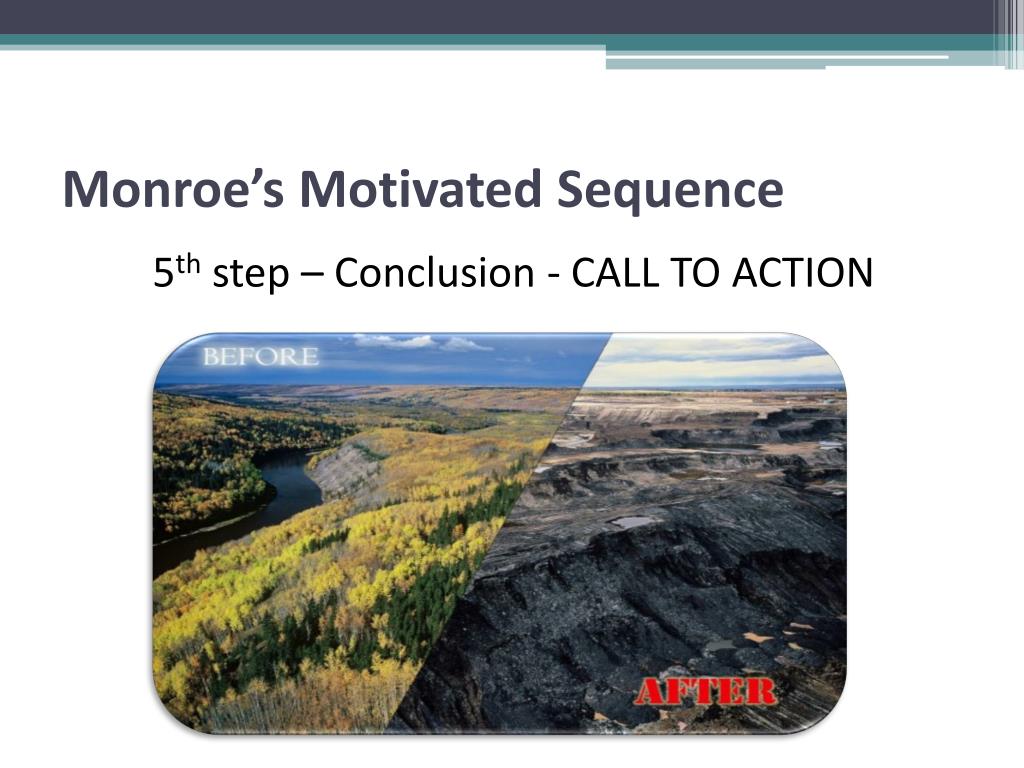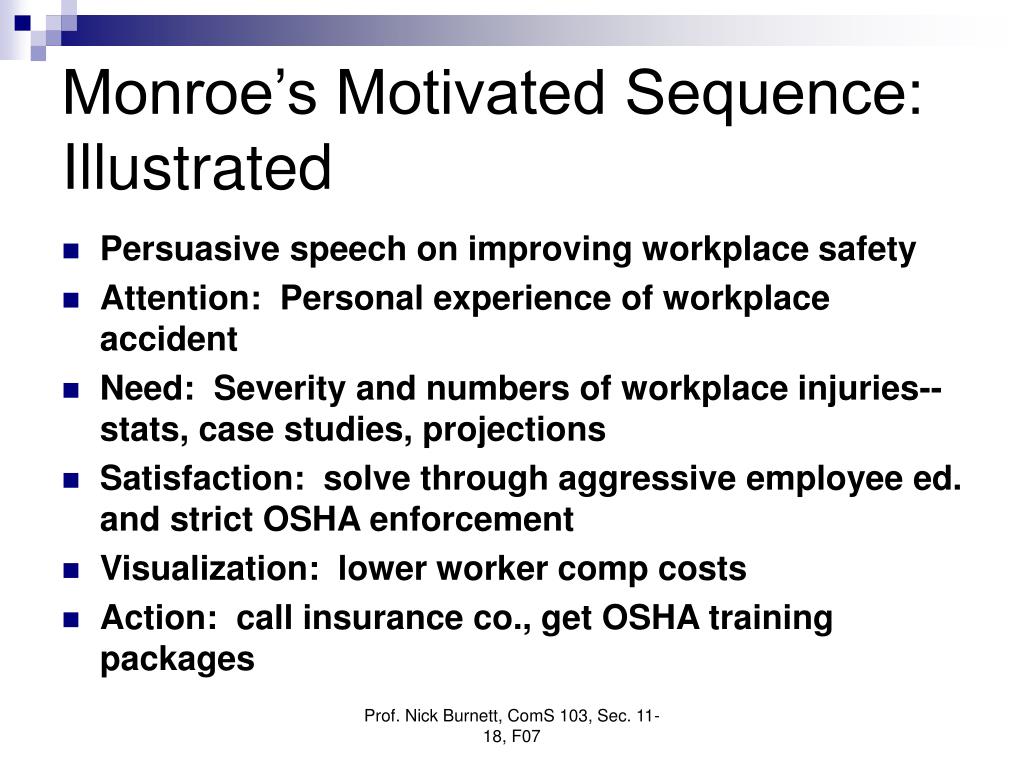

You could try to address this by bring a sample for them to taste or by offering out some recipes that contain molasses or offer up alternative ways to add molasses to your diet. For example in a speech where the audience was asked to take some molasses every day as a multi vitamin the audience may be concerned about the taste of molasses. Be sure to address the reasons that your audience may be reluctant to take the proposed action.
#MONROE SEQUENCE HOW TO#
Make sure you use enabling devices and specific examples of how to do the action, where and when the audience should do the action, and other details that enable easier implementation for the audience. ACTIONĪt this point, your audience should be motivated to take action! Your job now is to provide the audience with a specific action that is easy to accomplish, as they will be more likely to implement the action in their lives.

Help the audience to see the problem or to visualize how they can help remedy the problem. Instead of using raw statistics like 3 in 4 people are prone to procrastination tie it to the audience with a statement like 10 of the people in this room are procrastinators. By creating a connection to the audience like this it helps them to see what they have to gain or lose and helps to strengthen the logos appeal of your speech. The contrasts of the benefits of the recommended solution to the disadvantages of the current state.The negative future impacts of the current situation if the audience does not take action, and.The positive impacts of the recommended solution on the audience,.You will want to compare the current situation with the recommended solution by outlining: Visualization is important is showing the audience how they will directly benefit from implementing the solution, and how much better this solution will make their lives. using research (facts, figures, testimonies) to solidify your case.giving examples of how this solution has worked, and.discussing how this action is a solution to the need presented,.stating the action you want your audience to perform and clarifying any details,.The proposed plan of action should be clear and understood by the audience. The solution step is important in following the need because the audience wants to know how the proposed problem can be remedied.

Detailed examples visualizing the need,.In order to show the audience the severity or urgency of the exigence, you should prepare supporting materials such as: The need should specifically impact your audience in some way (their health, happiness, or well-being), so they can easily be persuaded to change their actions (or mindset). The second step in the motivational sequence is to outline the problem, or exigence, that your action for the audience aims to remedy. This hook worked beautifully with the speech and helped to build a solid footing for the speaker while drawing the audience in. This hook intrigued the audience and had them wondering where the speech was going to go next. This hook was linked in to the body of the speech with lyrical transitions between the points. An example of an effective hook was the use of singing as an introduction to a speech where the audience was asked to try listening to a different style of music. Posing a question (maybe rhetorical) or citing a relevant quote, and/orĪ good hook grabs the audiences attention while a poorly executed hook can cause the audience to tune out.You can nail a solid hook in a variety of ways, including: The way you intrigue the audience is called your “hook,” which gets the audience excited and attentive for the content of your speech. The first step is to grab the audience’s attention and get them interested in your topic as soon as your speech begins. The 5 steps in the motivated sequence are: ATTENTION This method of persuasion is effective because the speaker can predict the audience’s questions and concerns, answer these in the speech, and ultimately lead the audience to a solution. He developed a means of persuasion named “Monroe’s Motivated Sequence,” by understanding a person’s thought process when faced with a conflict and their need to satisfy that conflict. What is Monroe’s Motivated Sequence?Īlan Monroe was a psychology professor at the University of Purdue from 1924 – 1966 (Ristic 2012). This chapter originally appeared as a wiki entry here.


 0 kommentar(er)
0 kommentar(er)
